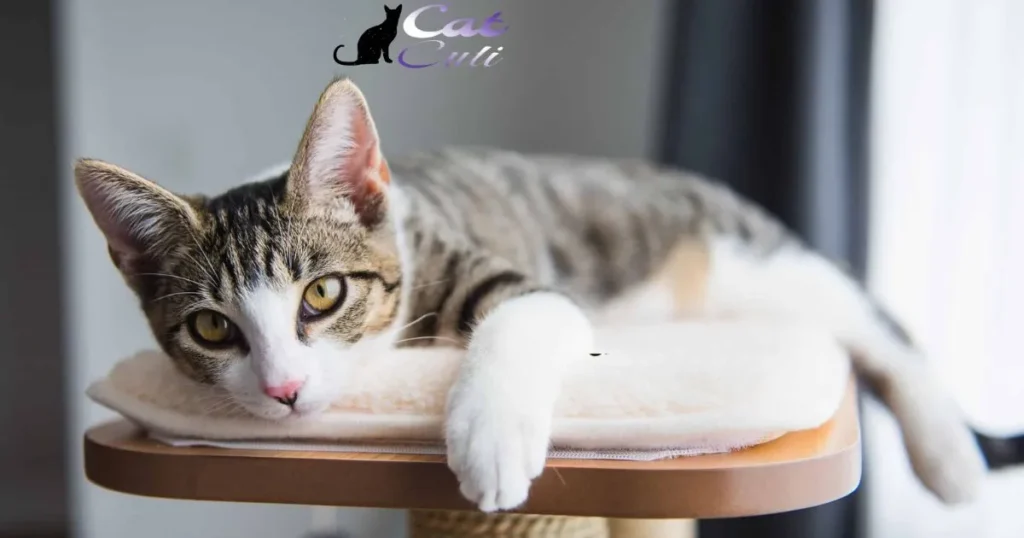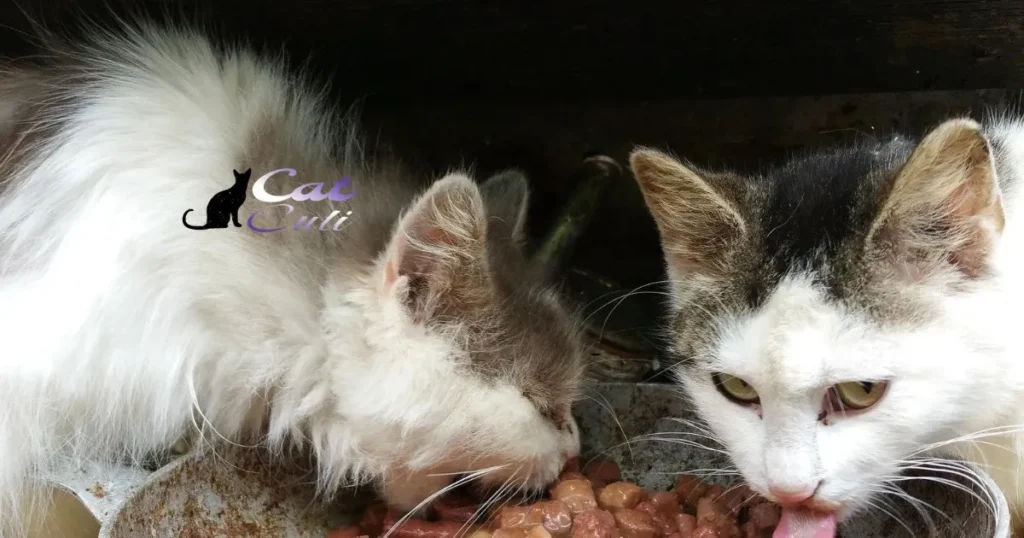Cats can share food bowls, but it’s generally not recommended. Sharing can lead to fights or stress between cats. It’s best to provide separate bowls for each cat to prevent conflicts. This ensures each cat gets its own food and feels secure during mealtime.
Curious about whether your feline friends can dine together peacefully. Can cats share food bowls? Delving into this question reveals insights into their feeding dynamics and the best practices for fostering harmony during mealtime. Discover the dos and don’ts of sharing food bowls among your beloved cats, ensuring their dining experience remains stress-free and enjoyable.
Wondering if cats can share food bowls? It’s a common query among cat owners. While it’s possible, experts suggest avoiding it to prevent potential conflicts between cats during meals. Providing separate food bowls ensures each cat gets its fair share and reduces stress during feeding time.
Cats Can Share Water Bowls
Cats sharing water bowls is okay, but it’s essential to keep the bowls clean. Refresh the water daily to ensure it stays fresh and appealing for your furry companions. Providing multiple water sources around your home can encourage hydration and prevent any squabbles over a single bowl.
Keeping their water bowls clean and accessible helps keep your cats happy and hydrated.When cats share water bowls, it’s crucial to monitor the cleanliness. Dirty bowls may discourage them from drinking enough water, leading to potential health issues.
Regularly rinsing and refilling the water bowls encourages cats to stay hydrated and supports their overall well-being. Having several water bowls scattered around various spots at home can also encourage them to drink more frequently.
Separate Bowls For Different Diets
- Different diets for pets necessitate separate bowls to prevent mixing of food.
- Individual bowls aid in maintaining dietary restrictions or preferences for each pet.
- Prevents competition or conflict between pets during mealtime.
- Helps monitor food intake for each pet accurately.
- Reduces the risk of one pet consuming another’s specialized or prescription diet.
- Allows for better control and management of portion sizes for each pet.
- Supports better health outcomes by ensuring pets consume their designated diet without interference.
Cats Hunt And Eat Alone In The Wild
In the wild, cats hunt and eat solo. They rely on their solitary hunting skills to catch prey and feed themselves. Each cat is independent, seeking and consuming its own food without relying on other cats for assistance. This solitary behaviour is ingrained in their natural instincts, guiding their actions when they’re in their wild habitat.
Their solitary hunting and eating habits ensure they have full control over their meals. Cats prefer to hunt alone, enabling them to focus on capturing prey without competition from other cats. This individual approach to hunting and eating in the wild reflects their independent nature and self-reliance when it comes to satisfying their hunger.
Indoor Cats Also Prefer Eating Alone

Indoor cats often like eating alone. They feel secure and less stressed when dining without other cats around. When provided separate feeding spaces, indoor cats tend to enjoy their meals more and eat at their own pace. This preference for solitary dining helps them feel comfortable and relaxed during mealtimes.
Creating individual eating areas for indoor cats is beneficial. It helps them maintain a sense of ownership over their food and space. By respecting their desire for solo dining, owners can ensure their indoor cats feel content and at ease while enjoying their meals.
Is There A Problem With Feeding Multiple Cats From One Dish?
Feeding multiple cats from one dish might cause issues. Cats often prefer their own space at mealtime, so sharing can lead to fights or stress. It’s better to give each cat its own dish to avoid conflicts and make sure they all get enough food. This helps maintain peace and ensures each cat feels comfortable during meals.
When multiple cats share one dish, it can trigger territorial behaviour. They might feel anxious or competitive, affecting their eating habits. To prevent these problems, providing separate food dishes for each cat is recommended. This simple adjustment minimizes conflicts and allows each cat to enjoy their meal without any stress or tension.
Should I Feed My Cats Separately?
Feeding your cats separately helps prevent tension during mealtime. Each cat gets their own space to eat peacefully, reducing competition for food. It ensures they feel secure and allows you to monitor their individual intake for any health concerns. Separating their feeding areas can create a calmer and happier dining experience for your furry companions.
When you feed your cats separately, you establish a routine that suits each cat’s needs. It helps manage any dietary requirements or specific feeding schedules for different cats. This method allows you to customize their meals, ensuring they get the right portions and preventing any conflicts that may arise during shared feeding times.
Do Cats Need Separate Food Bowls?
Cats usually prefer having their own food bowls. When they share, it might cause stress or conflicts. It’s best to provide individual bowls for each cat to prevent competition during mealtime.
This helps maintain a peaceful eating environment and ensures each cat gets enough food without feeling threatened.Separate food bowls also allow monitoring of each cat’s food intake. This helps in managing their diet and health better.
It’s a good idea to place the bowls in different areas to give each cat a sense of ownership over their food and prevent any territorial issues. Providing separate bowls is a simple yet effective way to ensure your cats eat comfortably and peacefully.
What About Water Bowls?

Water bowls are crucial for pets like dogs and cats. These bowls provide hydration throughout the day. You should clean these bowls regularly to prevent bacteria growth. Consider choosing stainless steel or ceramic bowls for durability. Avoid plastic ones that can harbour scratches and bacteria.
Changing water frequently is vital to maintain freshness. Pets prefer clean water, so replacing it a few times daily is advisable. Ensuring the bowl is sturdy and spill-proof helps prevent messes. Remember, a clean and reliable water bowl promotes your pet’s health and well-being.
Deciding Where To Locate Your Cat’s Food Bowls
When choosing spots for your cat’s food bowls, consider quiet areas away from heavy foot traffic. Place them in corners or against walls to offer a sense of security for your cat. Ensure the location is easily accessible for your furry friend but away from their litter box to avoid discomfort.
Keep the food bowls consistent in their placement to establish a routine for your cat. Avoid placing them near appliances or in direct sunlight to maintain the food’s freshness. By selecting a calm and accessible spot for your cat’s meals, you create a comfortable eating environment that promotes their well-being.
Assertive Vs Non-Assertive Cats
| Characteristics | Assertive Cats | Non-Assertive Cats |
| Behaviour | Confident, outgoing, dominant | Timid, shy, submissive |
| Interaction | Often assert dominance with other cats | Tend to avoid conflict or confrontation |
| Communication | Vocal, assertive meowing | Quiet, less vocal or submissive meows |
| Body Language | Direct eye contact, erect tail | Avoids eye contact, lowered tail |
| Socialization | May be territorial and dominant | Prefer peaceful coexistence |
| Handling | May resist restraint or handling | Tolerates handling and petting |
| Response to Stress | May react aggressively or defensively | Tends to withdraw or hide |
| Training Approach | Requires consistent and firm training | Responds well to gentle, patient training |
Can Cats Share A Litter Box
Yes, cats can share a litter box if they get along. It’s important to have one box per cat plus one extra. Sharing might not work if they’re not comfortable. Some cats prefer their own space for bathroom needs.
Introducing a shared box slowly helps. Start by placing it in a neutral area. Keep it clean and scoop it daily. Monitoring their behaviour is key. If any issues arise, provide separate boxes for each cat.
Do Cats Need Separate Water Bowls
Cats prefer having their own water bowls. It’s better for their health and hygiene. When cats share bowls, it can lead to territorial issues and contamination. Providing separate bowls ensures each cat gets enough water and avoids potential conflicts.
Having individual water bowls encourages proper hydration. Cats feel more comfortable and secure when they have their own space for drinking. This practice also minimizes the risk of spreading illnesses between cats through shared water bowls. Overall, it’s best to offer separate water bowls for each feline friend to keep them healthy and content.
Why Do My Cats Swap Food Bowls
Cats swapping food bowls might happen because they’re curious. They explore scents and tastes. Your cats might also swap bowls if one prefers other food. They’re playful and might be trying something new. Try placing the bowls farther apart. It could reduce the swapping.
Cats might share to bond. It’s a social behaviour for them. They could also be asserting dominance. This behaviour is normal among cats. Separate their feeding areas if swapping persists. It helps maintain individual preferences and reduces swapping.
How Many Water Bowls For 1 Cat
To ensure your cat stays hydrated, it’s good to have at least one water bowl available. Cats tend to prefer fresh water, so changing it daily helps. Having an extra bowl can be useful, especially if your cat is picky or if their current bowl gets dirty quickly.
It’s recommended to place the bowls in different areas of your home to make it easier for your cat to access water throughout the day.Some cats might need more than one bowl to encourage them to drink enough water.
Factors like the cat’s age, size, and health can affect their water intake. Having multiple bowls can prevent competition if you have multiple cats in your household, ensuring each cat has easy access to water whenever they need it.
Do Cats Share Food

Cats often don’t share their food willingly. They have a strong sense of ownership over their meals. In multiple-cat households, competition over food might arise. Cats might exhibit territorial behaviour, guarding their food bowls or even stealing from others. They prefer solitary dining experiences. Some might share food occasionally, but it’s not common.
Cats tend to establish their own feeding routines and spaces, making sharing less common than in other animals.Sharing food isn’t a typical behaviour among cats. They tend to assert ownership over their meals. In a group setting, they might display territorial behaviour around food, making sharing uncommon.
Cats prefer solitary eating habits and often establish personal feeding areas. While some might share occasionally, it’s not their natural inclination, differing from the more communal eating habits of other animals.
Should Cats Share A Food Bowl
Sharing a food bowl among cats is usually not the best idea. Cats often prefer their own space when it comes to meals. When multiple cats eat together, it can cause stress and tension. They might feel the need to compete for food, leading to fights or one cat not getting enough to eat.
Having separate food bowls for each cat is a good way to prevent conflicts. It allows each cat to eat peacefully without feeling threatened. This helps maintain a harmonious environment among your feline friends and ensures they all get their fair share of food without any fuss
can two cats share a food bowl
- Cats often prefer having their own food bowl.
- Sharing a food bowl might lead to stress and tension between the cats.
- Two Cats Share A Food Bowl, which can result in competition for food, causing fights or one cat not getting enough to eat.
- Having separate food bowls for each cat is advisable to prevent conflicts.
- Individual bowls allow cats to eat peacefully without feeling threatened.
- This setup helps maintain a harmonious environment among the cats and ensures they all get enough food without any issues.
can cats eat next to each other
Sure, cats can definitely eat next to each other. It’s important to provide enough space so each cat has its own food and water bowl. This helps prevent competition and potential conflicts over food. When cats eat separately, they feel more relaxed and less stressed, promoting a harmonious environment.
Introducing separate feeding stations helps avoid any territorial behaviour during mealtime. Cats prefer their own dining space, reducing the chances of one cat dominating or feeling threatened by another while eating. By creating separate meal areas, you encourage peaceful mealtimes for your feline friends.
FAQ’s
Can 2 cats share a litter box?
Yes, but it’s best to have one per cat plus one extra. Cats prefer separate spaces for cleanliness and comfort.
Is it OK for two cats to share a food bowl?
Yes, it’s okay, but most prefer their own. Separate bowls reduce stress and prevent conflicts over food.
Do two cats need their own food bowls?
Yes, to avoid competition. Multiple bowls promote harmony and allow each cat to eat comfortably.
Conclusion
In conclusion, the question Can Cats Share Food Bowls? has a nuanced answer. While cats can share a food bowl, it’s often better to provide individual bowls. This helps prevent potential conflicts and allows each cat to eat at their own pace without feeling stressed. When given separate bowls.
Ultimately, providing multiple food bowls for cats fosters a harmonious environment. It ensures that each cat has access to food without competition, promoting a sense of ease during mealtime. While they can share, offering individual food bowls is a simple way to enhance their well-being and maintain peace in a multi-cat household.








